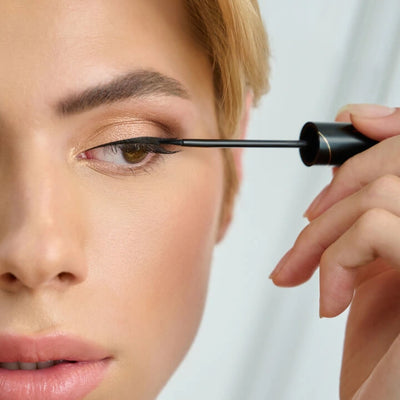Why Amino Acids Should Be in Your Daily Routine
If there is one category of compounds that you should pay close attention to, it’s amino acids. Your skin and hair need them to remain healthy, especially if your skin is dehydrated. But how do they do that, and how should you incorporate them into your skin, hair and beauty routines for best results?
What Are Amino Acids?
Amino acids are needed for important processes in the body, like the synthesis of hormones and building proteins. They are organic compounds that contain amino and carboxylate, which form the chains of peptides (often referred to as the building blocks of proteins).
Some amino acids are made naturally by your body, and others are plant derived. These two types of amino acids are categorized as non-essential (made by the body so it is not essential you get them from other sources) and essential (must be obtained elsewhere, like in topical skin care, food or supplements). There are also semi-essential or conditionally essential amino acids, which are dependent on the developmental stage and health status of the individual. Amino Acids can be synthesized internally or applied topically, but their main functions are to hydrate the skin and to improve the appearance of your skin overall.

Amino Acids & Skin Health
Amino acids support skin hydration, moisture and plumpness. As an antioxidant, they also reduce inflammation, smooth texture and build collagen. Having healthy skin and stimulating collagen production supports the health of your hair too, in the form of encouraging growth and reducing breakage.
Amino acids work well with other skincare products and can be mixed with other formulas. You can use amino acids topically every day, twice a day, as they are a super gentle ingredient. Dermatologists say amino acids are key for juicy, plump skin, so if you’re targeting premature aging, consider a moisturizer, serum or toner infused with amino acids.
Some of the most popular amino acids in skincare are:
- Glycine: a non-essential amino acid that the body can produce itself, but production decreases with age.
- Histidine: a semi-essential amino acid needed for growth and tissue repair.
- Leucine: an essential amino acid that helps to regenerate aging skin.
- Arginine: a semi-essential amino acid that hydrates dry skin and restores moisture.
- Glutamine: a non-essential amino acid that is a critical part of the immune system, plus it’s the most naturally occurring in the body and significantly increases collagen production.
- Proline: a non-essential amino acid that is vital for the formation of collagen and heals the skin.
- Tyrosine: a non-essential amino acid that is in all tissues of the body and produces melanin within the skin.
- Lysine: an essential amino acid that is found in collagen and helps its production.

How Amino Acids Work with Peptides
The Amino Acids included in skin care products work in combination with other ingredients that are also part of skin’s natural moisturizing factors (NMFs), including peptides, sodium hyaluronate (hyaluronic acid), glycerin and ceramides. These ingredients all contribute to skin and hair health, by building proteins that improve the skin’s barrier and reduce the visible signs of aging.
Amino acids especially well with peptides, which is why we infused our 3-in-1 Pretty Big Deal Peptide & Tubing Mascara formula with both peptides and amino acids. Combined, these ingredients ensure that our formula helps to lengthen and strengthen lashes, while enhancing the overall health of your lashes. You can learn more about our lash-enhancing mascara here.
 Amino acids promote and maintain health in the body, on the skin, and even enhance your hair – hello long lashes! To benefit the most from this essential ingredient, look for it in topical skin care products, hair treatments and lash & brow products like serums and mascaras.
Amino acids promote and maintain health in the body, on the skin, and even enhance your hair – hello long lashes! To benefit the most from this essential ingredient, look for it in topical skin care products, hair treatments and lash & brow products like serums and mascaras.



